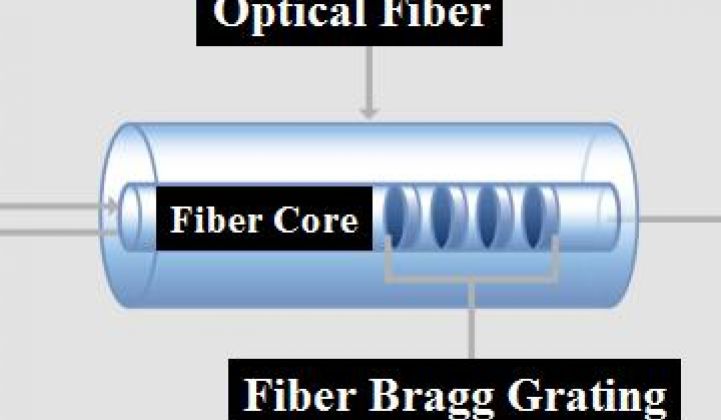Modern wind turbines cost well over a million dollars per megawatt. They earn by generating. They compete with cheap coal and currently, with very cheap natural gas for a place in the electricity market. Unscheduled down-time for a wind turbine could mean financial failure.
Turbines incorporate an array of sensing technologies that record and report the machine’s ongoing health as it stands up in incessant and varying, often damaging, weather. “If it’s not spinning, it’s not making any money. You certainly don’t want to spend millions and millions of dollars on a wind turbine to have it then go down for a mechanical problem,” said Brett Burger, Product Marketing Manager for Data Acquisition at virtual instrumentation technology powerhouse National Instruments (NI). But if you accurately monitor a turbine, Burger said, “the engineers and process managers can look at it and decide specifically when it needs to be taken offline rather than waiting for it to break down.”
"Traditionally, they used electrical sensors,” said Nathan Yang, NI’s Product Manager for Optical Sensing & Structural Measurements of wind turbines. But, he said, electrical sensors were not a satisfactory fit with modern, ever-larger turbines.
As blades got longer, Yang said, wiring for multiple electrical sensors became “a rat’s nest.” And tall turbines attract lightening. “High voltage and electrical systems don’t work well together,” he said. “A lightening strike would damage anything electrical.”
Optical sensors have been commonplace in telecom since at least the 1990s, when engineers did all they could to minimize the impediment of their sensitivity to temperature and strain. In the early 2000s, wind engineers had begun to see the disadvantages of electrical sensors in monitoring the health of turbine blades and were experimenting with optical sensors because of their sensitivity to temperature and strain. Research and testing at DOE’s National Renewable Energy Laboratory (NREL), in conjunction with leading turbine providers such as Vestas, GE and Siemens, established optical sensors’ efficacy.
National Instruments, a leader in the development of wind turbine nervous systems, saw the potential to advance the use of optical sensors. It partnered with Micron Optics, a leader in the optical sensor market, to develop the Optical Sensor Interrogator, which better detects when a turbine’s blades are suffering stress beyond their capacity.
The Optical Sensor Interrogator receives, reads, transmits and stores data detected by fiber Bragg grating (FBG) optical sensors embedded in fiber optic cable in the blades. It is a module that plugs into a unit in the turbine nacelle.
Together with NI’s monitoring and control technology, the data acquired by the Optical Sensor Interrogator can adjust a turbine’s operation in real time to reduce blade stress. “We leveraged our electrical expertise and our software expertise and we used Micron Optics’ optical expertise,” Yang said. “It can measure over 80 sensors ten times a second.” That capacity is more than adequate for the standard 3-blade turbine, which commonly has an average of fifteen to twenty sensors per blade.
More importantly, Yang added, is “an accuracy of one picometer” which means, he said, “about 0.1 degrees Celsius of accuracy and a 0.7 microstrain of accuracy.” That translates to readings of tiny temperature variations and eye-twitch levels of strain.
Modern turbine blades are fashioned from layered composite materials created to provide lightweight strength. But, Yang said, they are prone to defects and imperfections. Optical sensors’ sensitivities promise to allow turbine controllers to respond and protect even the most advanced but vulnerable of blades.
The Optical Sensor Interrogator’s combination of sensitivity and speed, in conjunction with the existing NI LabVIEW system control technology make for big ambitions at NI. “We aim to be a one-stop shop for integrating fiber technology right next to electrical sensor technology,” Burger said. “We can put those all in the same system and they will all talk to LabVIEW and then LabVIEW, being a control software, can tell an output device to either control a pitch, rotate the turbine, or shut down, in some cases.”
“We provide a tool for engineers and scientists to make their turbines smart,” Yang added.
The fully integrated “one-stop shop” application has not yet found widespread use in the wind industry, though the optical sensor technology has proven itself doing temperature and strain measurements in oil-field pipeline monitoring and air-freight component monitoring applications. Extensive testing in real-world turbines has been done and is ongoing, according to NI, by leading wind turbine manufacturers.
NI’s ambition for its product (price: $17,000 for the bare bones model, but probably upwards of $30,000 installed, with all the pieces in place) is founded not on its limited real-world performance but on what Yang saw as its irresistible logic. “Optical sensors are as good if not better” than electrical sensors, he said, in terms of reliability, performance, and ease of use.
As to accuracy, Yang described a recent experiment in which optical sensor data from a failed turbine blade was sent to wind engineers who were not shown the blade. “They were able to very successfully determine where the turbine blade failed and where the high pressure points were located,” Yang said.
“Wind technology is not brand new,” Burger said. “There’s a lot of engineering and learning that’s still going on.” One of the ways it can achieve economic viability, he said “is by spending a little extra upfront to be able to monitor the health of all these multi-multi-million dollar pieces of equipment and make them last longer.”



